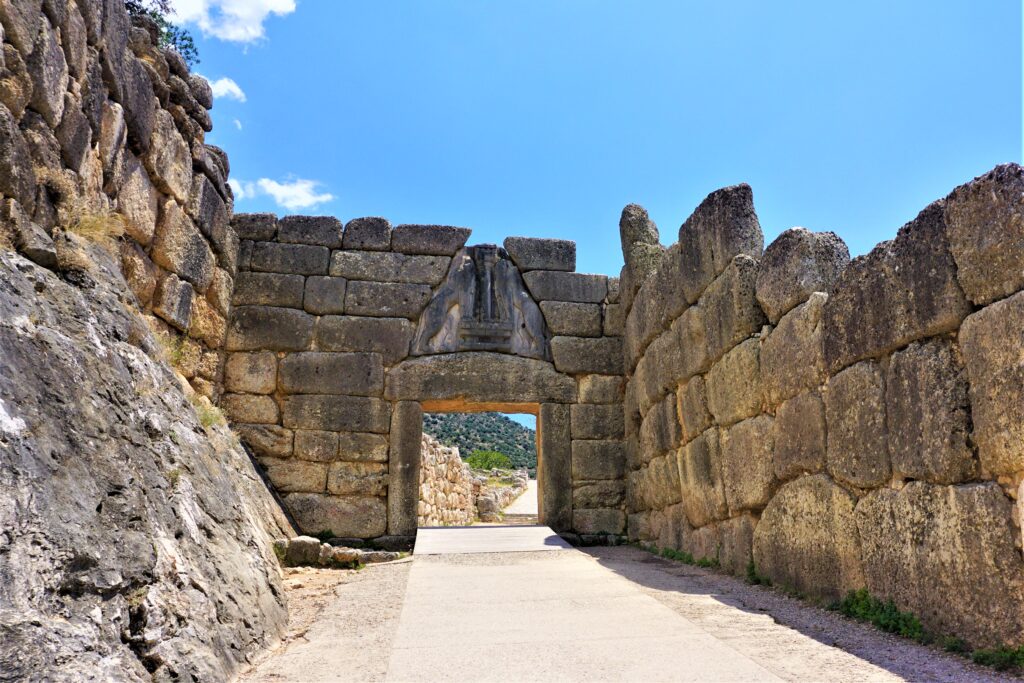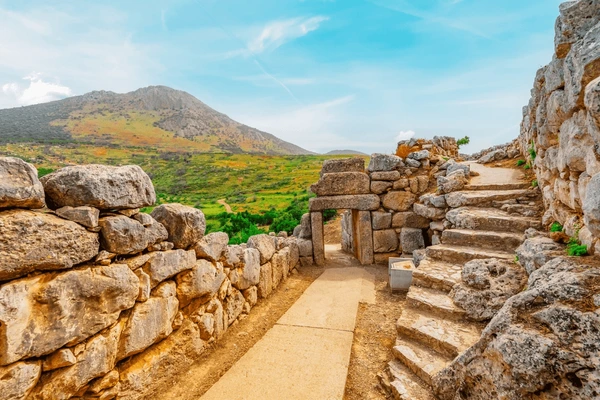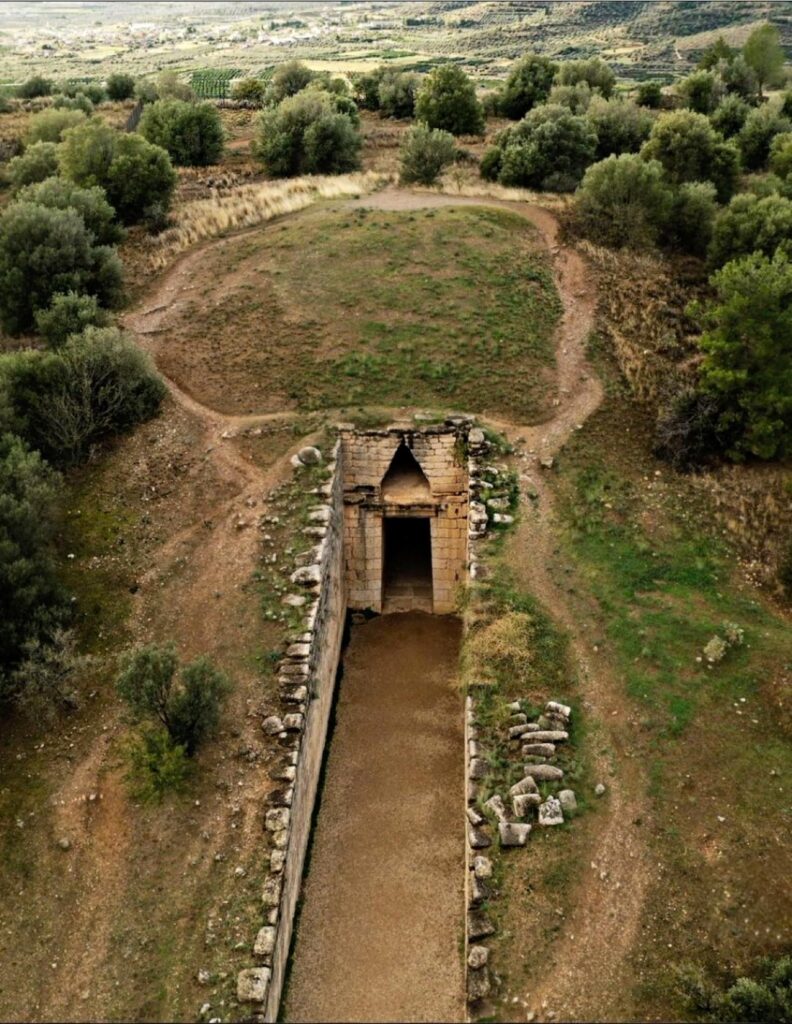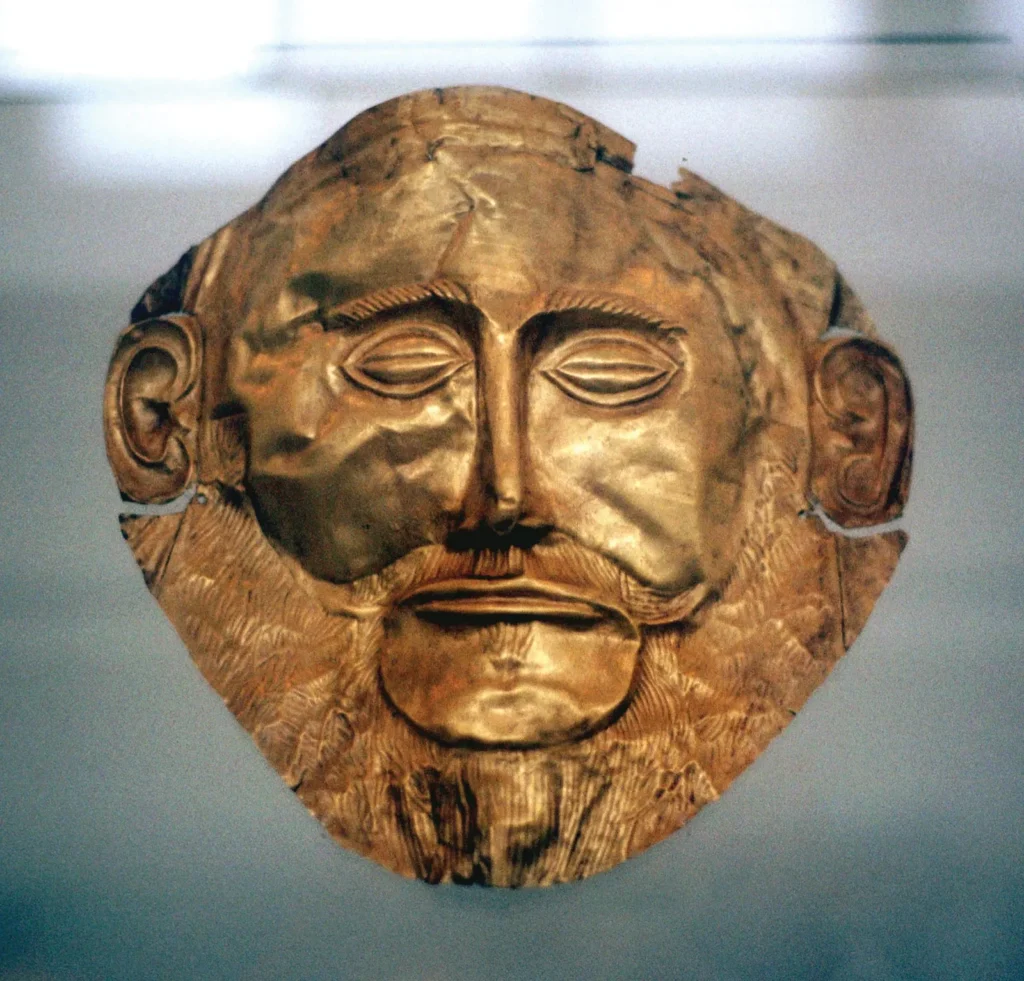Introduction to Mycenae
Nestled in the northeastern Peloponnese of Greece, Mycenae is one of the most celebrated archaeological sites in the world. As the heart of Mycenaean civilization, which flourished from the 16th to the 12th century BCE, this ancient city played a pivotal role in shaping Greek culture, politics, and mythology. Its well-preserved ruins stand as a testament to the ingenuity, power, and grandeur of a Bronze Age society that left an indelible mark on history.

The Monumental Features of Mycenae
The Iconic Lion Gate
The Lion Gate, dating back to around 1250 BCE, is Mycenae’s most recognizable feature. Serving as the main entrance to the citadel, this grand structure is named for the relief carving of two lions, a symbol of strength and divine protection. The gate exemplifies Mycenaean engineering, combining functionality with symbolic artistry, and remains one of the earliest examples of monumental sculpture in Europe.

Cyclopean Walls: Myths and Mastery
The Cyclopean walls, which encircle the citadel, are so named because ancient Greeks believed they were constructed by the mythical Cyclopes. Built with massive limestone blocks, some weighing several tons, these fortifications highlight the Mycenaeans’ advanced construction techniques. Their sheer scale and durability evoke awe, raising questions about the tools and methods used to achieve such feats without modern machinery.

The Royal Palace
At the heart of the citadel lies the royal palace, once the administrative and ceremonial center of Mycenae. The palace’s layout, with its grand megaron (a central hall with a hearth), reflects the social hierarchy and the Mycenaeans’ focus on centralized power. Archaeological evidence suggests the palace was richly decorated, featuring frescoes and elaborate architecture that emphasized the wealth and authority of the ruling elite.
The Treasury of Atreus
The Treasury of Atreus, also known as the Tomb of Agamemnon, is a tholos tomb that exemplifies the Mycenaeans’ architectural innovation. Built around 1250 BCE, its beehive-like design and corbelled dome represent a significant leap in engineering. This monumental structure, believed to house the remains of a powerful ruler, highlights the importance of funerary practices in Mycenaean society.

Mycenae in History and Myth
The Trojan War and Agamemnon
Mycenae holds a central place in Greek mythology, particularly in the epic tales of the Trojan War. The city is linked to King Agamemnon, the commander of the Greek forces in Homer’s Iliad. His tragic family saga, including his murder upon returning from Troy, has inspired countless works of literature, from ancient tragedies to modern adaptations.
The Legacy of Mycenaean Civilization
Beyond mythology, Mycenae was a hub of political and economic power during the late Bronze Age. Its influence extended across the Aegean and into the eastern Mediterranean, with evidence of trade networks, advanced craftsmanship, and administrative systems. The discovery of clay tablets inscribed with Linear B, an early form of Greek writing, offers valuable insights into the bureaucratic and economic structure of Mycenaean society.
Archaeological Discoveries
The Gold Mask of Agamemnon
One of the most iconic artifacts from Mycenae is the gold funerary mask, unearthed by Heinrich Schliemann in 1876. Initially believed to belong to Agamemnon, the mask is now thought to predate him by centuries. Its intricate design and craftsmanship underscore the wealth and artistic sophistication of Mycenaean elites.

Pottery, Frescoes, and Weapons
Archaeological excavations have revealed a wealth of artifacts, including intricately painted pottery, fresco fragments, and bronze weapons. These findings provide a window into the daily lives, religious practices, and artistic achievements of the Mycenaeans.
Mycenae as a UNESCO World Heritage Site
Designated a UNESCO World Heritage Site in 1999, Mycenae attracts scholars and tourists alike, drawn by its historical and cultural significance. The site offers a unique blend of myth and reality, allowing visitors to walk in the footsteps of legendary figures while marveling at the ingenuity of an ancient civilization.

Conclusion: The Enduring Legacy of Mycenae
Mycenae stands as a bridge between the mythic past and historical reality. Its ruins not only preserve the memory of a once-great civilization but also inspire awe and curiosity about the world of the Mycenaeans. From the Lion Gate to the gold mask, every stone and artifact tells a story of ambition, innovation, and enduring influence—a legacy that continues to captivate the imagination of the modern world.

